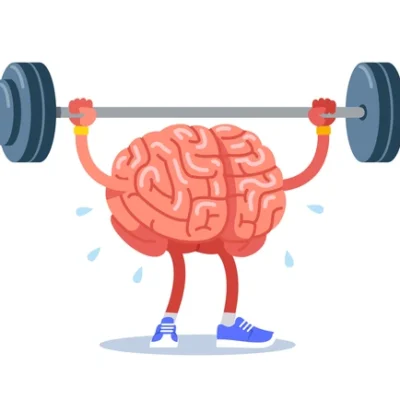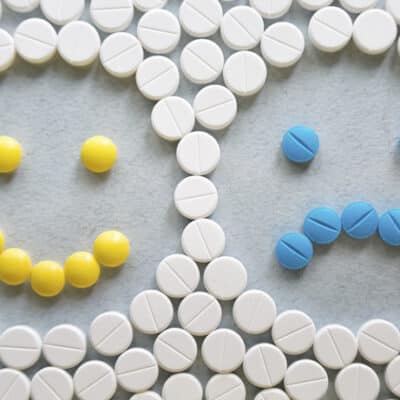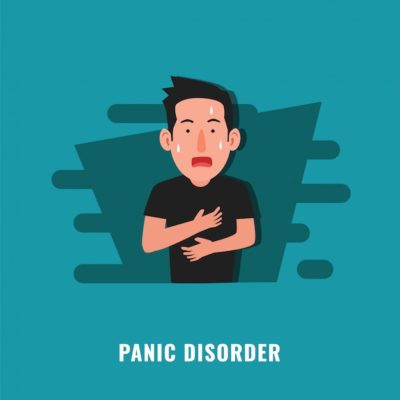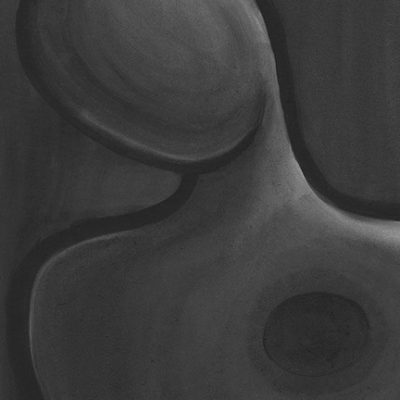
Article Topic: Major Depressive Disorder.
Author: Aya M. Al-Kailani.
Keywords: Psychiatry, Major Depressive disorder, Mental Illness, MDD.
Scientific Editor:
Linguistic editor: Aroob Awwad Awwad.

Major Depressive Disorder
Overview
Major depressive disorder (MDD), also simply known as depression, is a common mental disorder characterized by mood changes along with cognitive and physical symptoms over a period of 2 or more weeks [2]. According to the World Health Organization, depression currently affects about 264 million people worldwide, making it one of the most common mental disorders in the world and one of the leading causes of suicidal attempts and mortality. Therefore, it is crucial to human well-being that we understand, recognize, correctly diagnose, and treat depression. Amid the multitude of therapeutic options, some individuals have found solace in natural aids like Organic CBD Nugs. While conventional treatments remain essential, incorporating holistic methods into depression management can provide a more comprehensive approach. As we collectively address the global impact of depression, integrating diverse tools and approaches becomes imperative to offer individuals a more personalized and holistic journey towards mental health recovery
Prevalence
According to the WHO, MDD is the third most common burden-causing disease worldwide, and is expected to rank first by 2030 [1]. In 2015, around 16.1 million American adults had at least one major depressive episode in the past year, which is about 6.7% of U.S. adults [10]. Prevalence of depression is measured by scores from the Patient Health Questionnaire, PHQ-9, which is a symptom-screening questionnaire that allows mental health practitioners to diagnose depressive disorders [8]. According to the PHQ-9, a person is diagnosed with depression if they have had the moderate or severe symptoms mentioned in the questionnaire in the past 2 weeks.
A study done on the U.S. population in the years 2013-2016 reveals that [11]:
- 1% of American adults 20 years and above had depression in a given 2-week period in the years 2013-2016.
- Females were almost two times more likely than males to have had depression.
- Depression was lower among Asian adults compared with Hispanic, African American, and White adults.
- Almost 80% of adults with depression have had some difficulty with work, home, or social activities due to their depression.
- As family income levels increased, the prevalence of depression decreased.
Risk Factors
Depression rates differ by many factors including age, sex, income, and health behaviors [7]. Depression is more common amidst adults aged 40–59 years. Rates of depressive symptoms are lower among white persons than Hispanics and African Americans [9]
MDD can arise without any preceding stressors, but stressful life events can certainly increase the risk of developing the disease [20]. Psychosocial stress, chronic pain and medical illnesses can also increase the risk of developing MDD [21]. A study has also shown that cerebrovascular disease may lead to the development of late-life depression. [22]
Pathophysiology
The underlying pathophysiology of MDD is still unclear. However, clinical studies suggest that it occurs due to interactions between different neurotransmitters in the brain. Many of these clinical studies attribute MDD to a serotonin (5-HT) deficit. Other neurotransmitters also believed to be involved are norepinephrine (NE), dopamine (DA), and glutamate [5]. This explains the mechanism of action of many antidepressants that increase neurotransmitter availability such as selective serotonin reuptake inhibitors (SSRIs). SSRIs prevent serotonin reuptake by presynaptic neurons, which leads to higher serotonin levels in the synaptic cleft binding to receptors on postsynaptic neurons, therefore enhancing the mood of the patient.
Other pathophysiological aspects are sunlight exposure and vascular lesions. Changes in the levels of 5-HT can also be possibly due to variations in the weather and the circadian rhythm. The rate of production of serotonin by the brain was directly related to the individual’s duration of exposure to bright sunlight and also increased sunlight luminosity. [6]
Etiology
MDD has a multifactorial etiology related to genetics, stressors, neuroendocrine [12] and neurodegenerative disorders, parent-child relationships, and vascular lesions.
In depression developing in early childhood, transmission from parents to children appears to be more related to psychosocial influences than genetics [13]. Major depression has a concordance of 40-50% in twins, and first-degree relatives of depressed individuals are approximately 3 times more likely to develop depression than the general population. [14]
Multiple genes are believed to be responsible for the susceptibility to depression, including:
- MDD1 and MDD2 genes, each proven to be involved in major depression in males[15] and early onset or recurrent depression [16], respectively.
- Polymorphism in the promoter region of SLC6A4 gene involved in the serotonin system could possibly lead to MDD. [15]
- Defects in genes that encode the enzymes responsible for serotonin production or response to serotonin. For example, polymorphism in the TPH2 gene, which encodes tryptophan hydroxylase for serotonin synthesis, results in an 80% loss of serotonin production [18]. Also, the HTR3A and HTR3B regions, which encode serotonin receptors are known to be associated with MDD in both European and Japanese individuals. [19]
DSM5 Diagnostic Criteria [23]
The DSM-5 states that for an individual to be diagnosed with MDD the following criteria must apply:
A. Five or more of the following symptoms daily or nearly every day for a 2-week period, at least one of which should be criterion 1 or 2:
- Depressed mood most of the day.
- Significantly decreased interest/ pleasure in all, or almost all, activities.
- An increase or decrease in appetite and weight.
- Slowed thought process and a reduction in physical movement observable by others; not merely by the subject.
- Fatigue or loss of energy.
- Feeling of worthlessness or inappropriate guilt.
- Inability to think or concentrate, being indecisive.
- Recurrent death thoughts/ suicidal ideation/ attempts, or having a planned suicide.
B. To be diagnosed with depression, these symptoms must cause significant impairment in the individual’s social, occupational, or other areas of functioning.
C. The symptoms must not be as a result of substance abuse or other medical conditions.
Treatment
– Pharmacotherapy used include:
- Selective serotonin reuptake inhibitors (SSRIs)
- Serotonin/norepinephrine reuptake inhibitors (SNRIs)
- Atypical antidepressants
- Serotonin-Dopamine Activity Modulator (SDAMs)
- Tricyclic antidepressants (TCAs)
- Monoamine oxidase inhibitors (MAOIs)
- N-methyl-D-aspartate (NMDA) receptor antagonists
- John’s wort (Hypericum perforatum)
Based on a comparative study done on 21 available antidepressants, all types of antidepressants in the market are effective in treating depression [24]. However, they need to be taken for two to six weeks at a therapeutic dose before an observed response is seen. Failure of treatment by antidepressants is usually due to medication noncompliance, inadequate duration of therapy, or inadequate dosing.
– Psychotherapy
Psychotherapy depends on treating mental health problems by talking to a psychiatrist or psychologist once a week in an outpatient clinic for 45- 60 minutes. These sessions can improve patient’s general well-being and quality of life by reducing symptoms of depression, as well as provide support in coping with past traumatic experiences, other medical illnesses or loss of a loved one. [26]
– Electroconvulsive Therapy (ECT)
ECT is the oldest among the treatments introduced in the psychiatric field, and the only one still in use to this day as it remains a valuable treatment option for treatment-resistant depression [27], patients in need for a rapid antidepressant response, and patients at high risk for suicide or medical morbidity and mortality. ECT is a generally safe procedure done under general anesthesia where small electrical currents are passed through the patient’s brain to provide relief by inducing brain chemistry changes that quickly improve symptoms of certain mental disorders. The onset of action is more rapid than the onset of pharmaceutical treatments, with changes often observed within 1 week of therapy.
– Diet and Exercise
Besides the previously-mentioned approaches, dieting and exercise is a useful option for treating depression. It is believed that certain diets such as the low-sodium Dietary Approaches to Stop Hypertension (DASH) diet and the Mediterranean diet exert positive effects on mental health as shown by participants compliant with the DASH diet, who were 11% less likely to become depressed than those who were not [28]. Multiple studies showed that the Mediterranean diet, which focuses on fish, fruits, vegetables, and olive oil as the main source of fat, can improve mental health in individuals with depression. [28, 29, 30]
Exercise was shown to have a role in improving depressive symptoms and facilitating psychological well-being in adolescents and adults in clinical studies [31], and proved to induce positive effects on psychological disorders such as depression. [32] This is believed to result in enhancing patients’ mood through the release of natural brain chemicals in addition to getting the individuals’ mind off their depressive symptoms.
Prognosis
Sadly, depression plays a role in more than half of all suicidal attempts, since the lifetime risk of suicide among patients with untreated MDD reaches about 20% [3]. According to the CDC WISQARS Leading Causes of Death Reports in 2018 [4], suicide was the tenth leading cause of death in the United States, claiming the lives of over 48,000 people. Among the ages of 10 to 34, it was the second leading cause of death, and the fourth between the ages of 35 and 54 years. However, much more positive outcome is expected in patients who seek and adhere to therapy.








